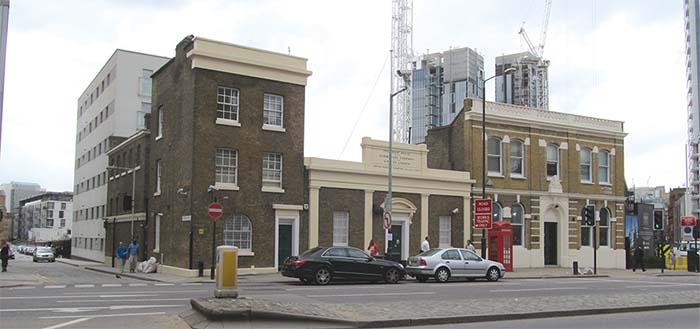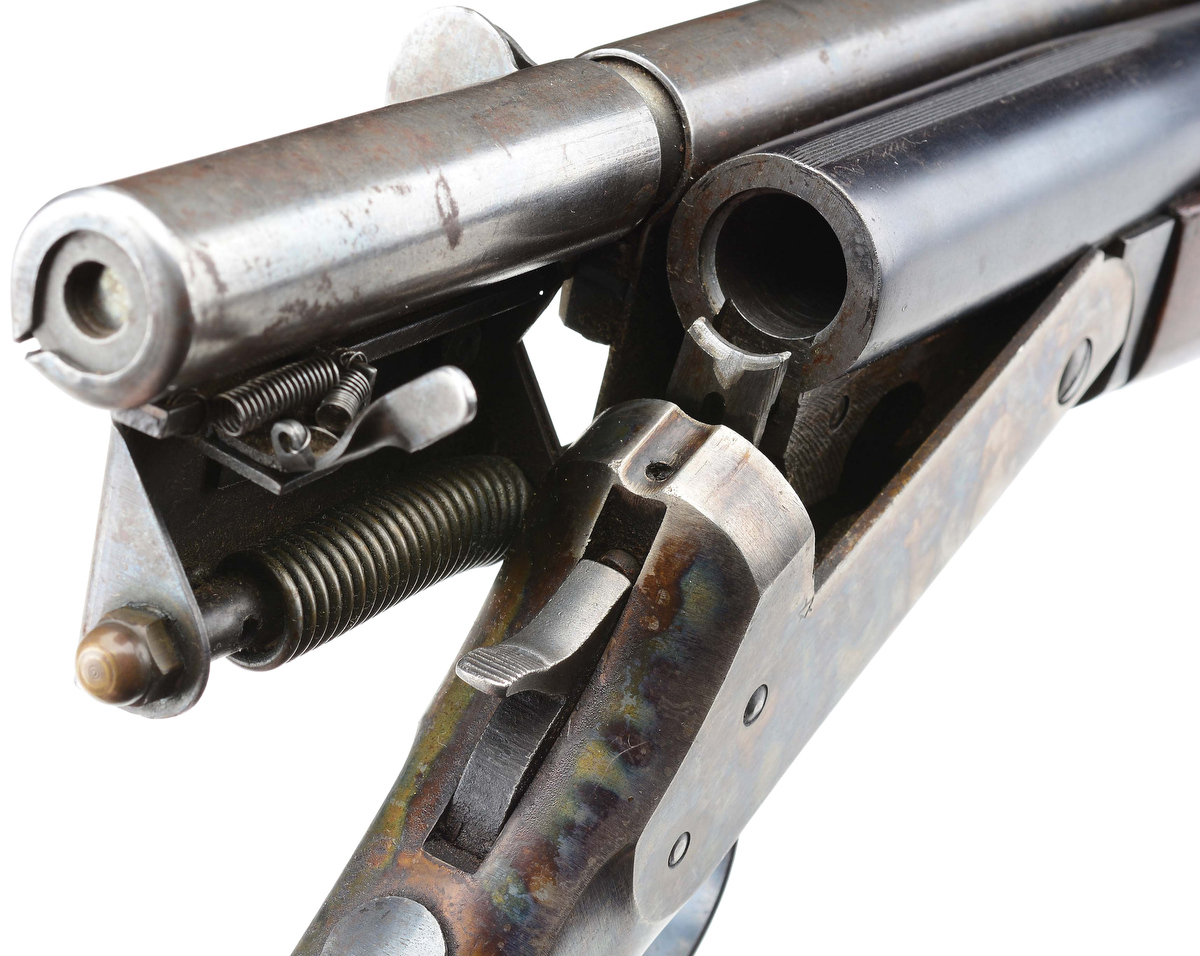The Proof House today. Not even the buildings have changed very much although the building on the right has often been rented out by the Proof House in times of economic strife.
By Miles Vining
Small Arms Review received the unique opportunity to tour one of the oldest running companies in the world of small arms. The Worshipful Society of Gunmakers, more commonly known as the London Proof House, has been in constant operation since 1637 completing the same tasks it was chartered to complete when it was founded: that of proof testing gun barrels and making them safe for use. Richard Mabbitt is the current Proof Master and spent several hours with the author touring the Proof House building and answering questions about the business.
Small Arms Review: So what kind of business does the Proof House find its clients in today?
Proof Master Richard Mabbitt: Apart from the mainly civilian side of things, we do an awful lot of military arms as well, whatever the government buys or is using. With the ban on handguns in the United Kingdom, we obviously dropped that part of the business. In more recent years, arms such as rifles and shotguns have increased in demand. With the changes to the laws about deactivated firearms, we’ve seen a good amount of deactivated firearms coming for certification.
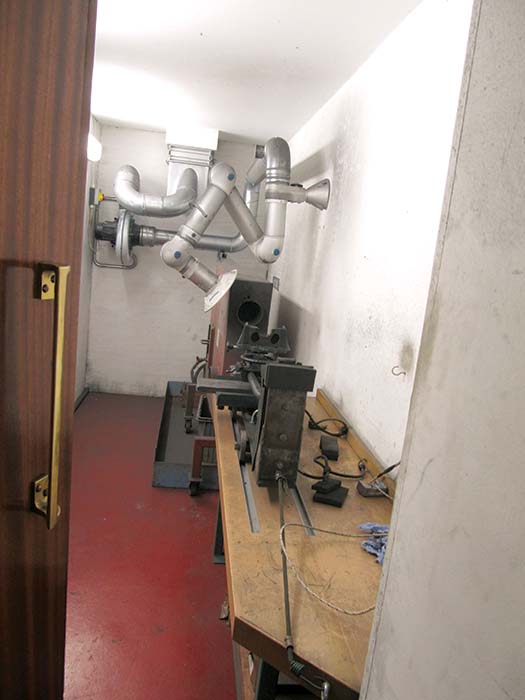
SAR: What is the history behind the Proof House and why is there a need for one?
Mabbitt: When gunmaking was beginning to become a prominent commercial trade back in the fifteen and sixteen hundreds, a number of gunmakers got together and realized the need to have a central authority declaring that a gun sold in England, was in fact safe and of high enough quality to sell to the customer buying it, that it wouldn’t blow up in his face because it was improperly manufactured. From this need, the London Proof House was royally chartered by Charles the Second. The original site of the Proof House was actually about 200 meters down the road where the city wall of London once stood. In late 1673, the Proof House suffered an explosion that took out some of the city wall with it. Thereafter the London councilmen ordered the Proof House to move to a new location outside of the city, at which it stands today in this building. Back then fields surrounded it, but since then London has built up all around our current address at Commercial Road. It was chartered as a “Livery” company. This meant that the liverymen in it were originally a part of a trade such as goldsmiths, blacksmiths, or tailors. Apart from the daily operations, we also have a historical record of helping police forces with identifying various firearms that come up, in addition to helping investigate un-proofed guns (firearms that were in the United Kingdom that had not been proofed). Today most of these Livery companies have diversified as time has progressed and we are one of only two Livery companies still in operation and still doing the same work we were completing when we were formed. We’ve had our ups and downs, mostly during times of war or low economic turn out.
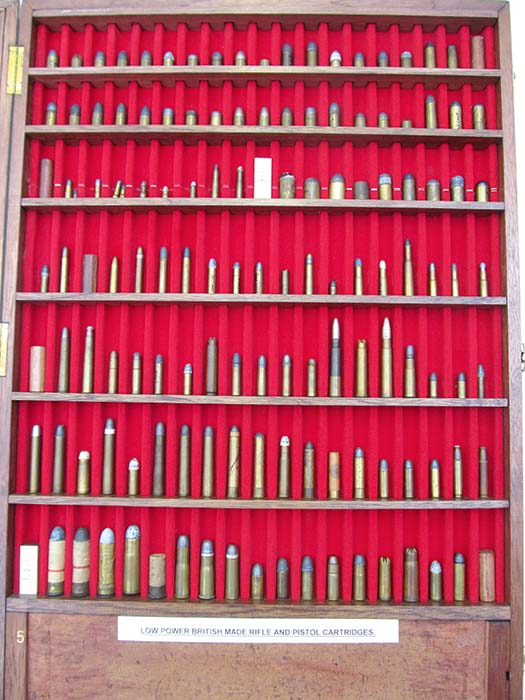
SAR: What are the differences between a Proof Master and the Master of the Proof House?
Mabbitt: The Proof Master is a historic position dating back to 1637. The role has changed little over time and encompasses all aspects of the business ensuring the smooth operation on a day to day basis. This includes overseeing the proof process, quality control, security and liaison with the military and government amongst many other duties. If you look at our plaques in the main room, we list every single Proof Master and Master that has ever been at the helm of the Proof House. We’ve had over 350 Masters but only 27 Proof Masters since 1637, myself being the twenty seventh. The Masters position is mostly a ceremonial one lasting only a year on the job. Proof Masters usually stay in the position until they retire or die. They are appointed by the Proof House Committee, which in turn is appointed by the Court of the Gunmakers Company.
SAR: Can you describe the process from start to finish of what a barrel or firearm goes through from the time it is delivered to the front doors?
Mabbitt: The arms are initially booked in; they aren’t classed as firearms because we are exempt from the National Firearms Act. At that stage we don’t know what we have in the boxes, whether they are rifles, pistols, or machine guns. This is where we fill out paperwork as to what they came in for, if it is for proof, the arms are initially checked for safety. All safety precautions are adhered to, to make sure no loaded firearms come in. We conduct a visual inspection but we don’t carry out non-destructive testing unless an armorer has come in for an incident report. Once we’re happy with our visual inspection of the entire arm, looking for any obvious fractures or weaknesses of the material, we will then go on and gauge the arm. On a modern arm we are gauging for cartridge headspace, diameter of the bore, diameter of throat and freebore. On a smoothbore we’ll also check for chamber lengths and the bore diameter of the 9 inch point. Once we’re happy we’ve got full compliance with CIP (Commission Internationale Permanente pour l’Epreuve des Armes a Feu Portatives, the European equivalent of SAAMI, except at the government and not civilian level) and the Gun Barrel Proof Act of 1868, later amended in 1978, we’ll then go and test fire the arm; testing each barrel twice with cartridges producing approximately 25 percent overpressure. Once we’re happy with the firing of the arm, they will go back into the workshop where we will go through exactly the same inspection and gauging process as before. What we are looking for there is any change that may have occurred during the firing process. If everything checks out alright, then the arm has been satisfactorily proofed. At this point we proof mark by various methods including pantograph engravers with diamond tipped or carbide cutters. We also still use the traditional hand stamp that has been in use since 1637 which is hammered into the weapon. (Most of the London Best guns are still done in this fashion, the Holland & Hollands, the Purdeys, etc.) For some of our modern arms we have a laser engraving machine, this is especially useful on anodized aluminium or polymer surfaces. When this marking process has been completed, we take information from the arm and put it onto our database.
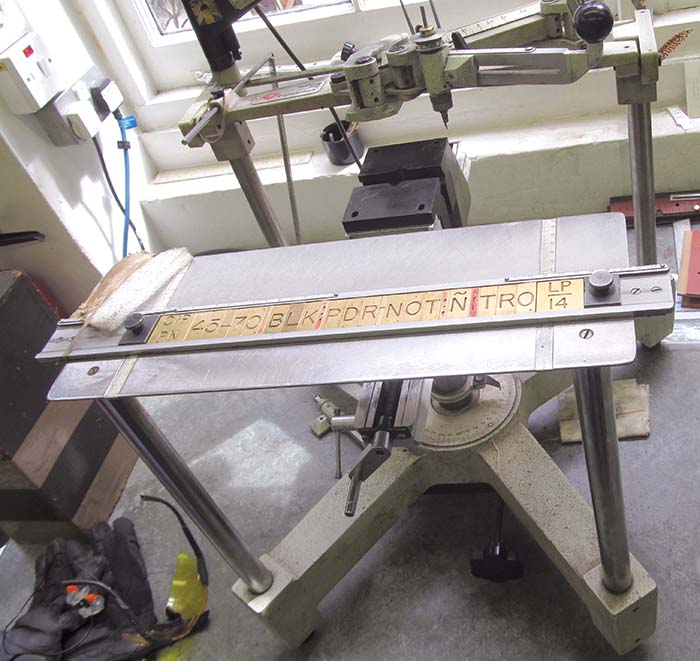
SAR: What constitutes a “Proof Cartridge” and where do they come from?
Mabbitt: The proof cartridges that we use produce about 25 percent overpressure. They’re all manufactured by our own laboratory. We went into a joint venture with the Birmingham Gun Barrel Proof House about 10 years ago and they produce all of our proof ammunition and conduct all of our tests on caliber gauging equipment. The cartridges are made of standard service components; the only real difference is the pressures they produce at the chamber. We keep them in a climate controlled room at 21 degrees Celsius. The standard for testing ammunition requires the temperature to be at 21 degrees but we apply this standard to the ammunition used when testing small arms. Most of our proof rounds on hand are for common firearms, but every so often we’ll get a firearm that is chambered in an obscure or obsolete cartridge and we’ll have to make a special order to accommodate that.
SAR: How much does it cost per firearm to get proofed and how is the business divided?
Mabbitt: Cost differs tremendously; it all depends on the caliber. A .22 caliber barrel will cost much less than a .700 Nitro Express. Take for example a .22 caliber sound moderator (suppressor) coming to us in quantity, will only cost £5 per unit. A 12 gauge shotgun is about £30 per barrel and something like a .308 Winchester will be £25-£30 to test that firearm. If a barrel blows up during the proof, we return the barrel and the customer owes us the same amount as if it has been proofed. As for customers, just under 60 percent are police, military and other specialist users. We’ve got about 3 percent of our business comes from the “Best” London trade – your Hollands, Purdey’s and Boss’. The “Best” shotguns. About 15 percent is certifying deactivated firearms. And then the remainder comes from our sporting clients, mostly imported rifles and shotguns that are sold in the United Kingdom. This also includes repairs done on these as well. Because the Gun Barrel Proof Act requires that if a barrel is modified in any way that will affect the material structure, it must be reproofed. For example, if a gunsmith screwcuts a barrel to add a sound moderator (suppressor), or rechambers the barrel. We handle about 18,000 weapons per year.
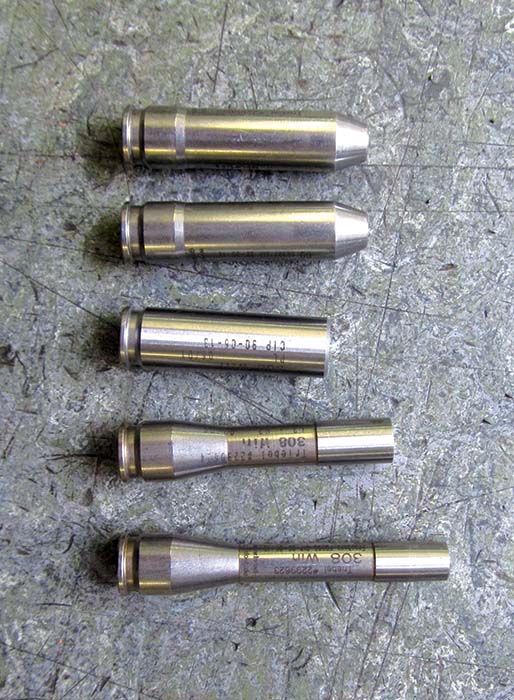
SAR: Is there any special consideration given to the London “Best” guns when they go through proof?
Mabbitt: No, they are treated like any other firearm that comes through the front doors. Although they may end up costing over £50,000 or £100,000 GBP when they are finished, the gunmakers send them to us when they are in the initial stages of production and thus we won’t be hurting any of the finish that is applied later on to complete them.
SAR: Can you explain how the Proof House serves the British Ministry of Defence (MoD)?
Mabbitt: Since the closure of Nottingham and Enfield factories, the MoD no longer proof their own small arms. That is left up to the individual manufacturers who come to us. We also work with the MoD on any specialist projects that they might have such as proofing the 30mm guns on the Apaches made in Arizona. We also proof 40mm grenade launchers but we don’t use High Explosive projectiles, we use lead shot. This is because we are testing how the chamber reacts to the proof round; anything that leaves the muzzle is none of our concern.
SAR: What about competition in the business?
Mabbitt: There are two proof houses in the U.K and those are London and Birmingham. We are two separate competitors as well in proof testing of firearms though we do work together as far as regulatory and legal matters are concerned and also in ammunition control. But the London Proof House, although we don’t have any branch proof houses anymore, we do a lot of our work off site. So I’ll send one or two of my men out to different sites once or twice a week all over the country. A lot of this takes place at predominately MoD ranges. One of the biggest differences between us and Birmingham is that we do mostly military small arms while they handle mostly commercial firearms. Also with the placement of a proof on the London “Best” guns, the two proof houses mark them on different sides of the shotguns; we stamp it on the right side of the receiver while Birmingham stamps theirs on the left side. Both are very similar, but Birmingham has a slightly large foot print.
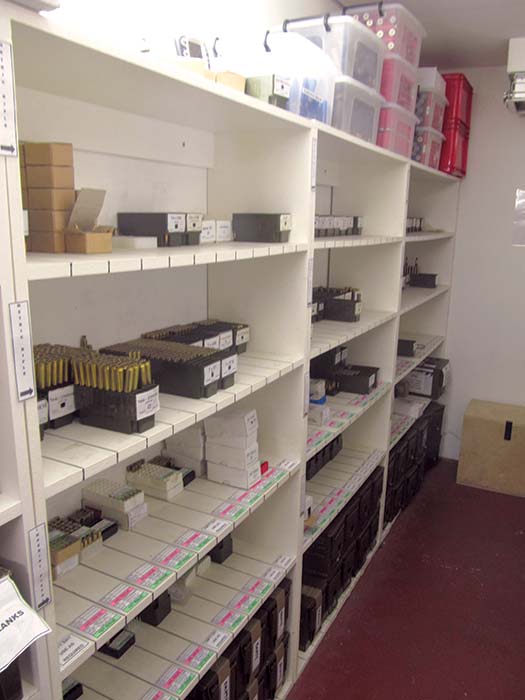
SAR: How has technology changed the way the Proof House operates?
Mabbitt: The actual proof process is very much unchanged since 1637 in that we hand stamp proofs. Yes, technology has come into it in that we are now using various different gauges when inspecting the firearms, and with the marking we still use the traditional hand stamping method. We now do use pantograph engravers, and a laser engraving machine. But the actual process is pretty much the same since 1637. Back then, we laid barrels or firearms on a sand embankment and fired them off into a solid backstop. Today we have a reinforced room where we lock the actions or barrels into a vice that is pointed at a bullet snail catcher. A lanyard is attached to the trigger, or a contraption that can ignite the caps on a double barrelled shotgun that has yet to have a trigger mechanism. A Proof Assistant then closes the door, sounds a siren and yanks the lanyard to test fire the proof rounds (there are three of these “proofing” rooms in the Proof House). We are currently planning on installing high speed cameras in our testing areas so we can actually see what happens to the firearm at the point of ignition, if it happens to have a catastrophic malfunction due to a proof round. Ultimately we were founded for the purpose of public safety and that’s what we are doing today. We are just checking the safety elements of the firearms that come through our doors.
SAR: What is the Proof House’s relationship with the CIP and with American SAAMI (Sporting Arms and Ammunition Manufacturers Institute) today?
Mabbitt: The CIP is the predominantly European accepted standard of proofing and has fourteen member states. The UK government entered the CIP in 1980. With SAAMI, we have worked side by side but not necessarily interacting that way. Certainly I’ve played a very active part in cementing that relationship and have brought our organizations closer. In fact we have set up a working group with the CIP for CIP-SAAMI relations. We meet with SAAMI twice a year in various locations within the United States, along with CIP officials. I’ve attended these meetings for the last three years. The aim of these is to bring all our protocols into line so CIP and SAAMI can work off the same regulatory ammunition standards. We (the London Proof House) are also the only proof authority within the CIP that is entirely non-military or government run.
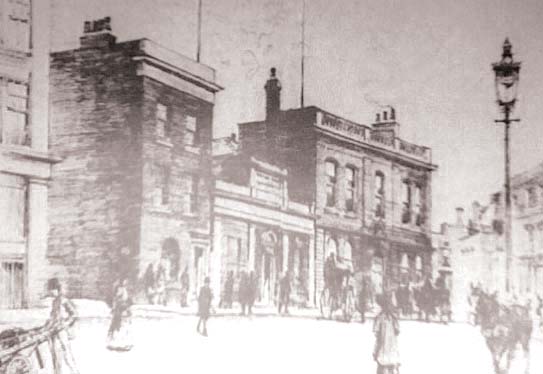
SAR: What kind of employees work at the Proof House and what are their backgrounds?
Mabbitt: All my staff actually hands on in the workshop come from a military armorer experience. I only have one engineer who has an entirely civilian background. All of the Proof Assistants are extremely experienced in their trade and have been working with different types of firearms for most of their professional careers. Indeed, most of the decisions that we come to in the Proof House come from the Mark One eyeball in regards to proofing arms. As for myself, I completed 10 years in the Army, serving in Germany and Northern Ireland as an armorer. After I left the service I spent a number of years working with different gunmakers until I became the Proof Master here in 2007.
SAR: What are the priorities in dealing with certifying deactivated firearms and destroying firearms?
Mabbitt: With destroying firearms, we’ll usually receive collected firearms from the Police that need to be destroyed or illegal guns that have been confiscated. With these we will make a number of cuts in the courtyard of our building until the metal is turned into scrap and a person cannot build a firearm from the remaining pieces. As for deactivated firearms, this has become a booming industry in Europe. We follow governmental directives on them that change from time to time. Mostly this includes cutting a slot down the length of the barrel, machining off most of the rails on slides and cutting the bolt face at an angle so a round cannot be chambered. These are then certified by stamping our proof mark for deactivation which is a “DA” over a sword and the year it was completed in.
SAR: So what does the future hold for the London Proof House?
Mabbitt: Obviously we have been carrying on throughout the many years of our existence. However we are dependent on what comes on through the front door. If the government creates more changes to the firearms laws, that would obviously have an effect on firearms coming to us. But certainly we put a lot of our attention on the Armed Forces and I’d like to think that our future is quite secure. We’ve been going since 1637 and we don’t intend to give up any time soon.
Although the London Proof House is not open to the public, readers can travel to its location on 46 Commercial Road, London E1 1LP. The nearest Underground station is within walking distance at Aldgate East on the Circle and Metropolitan Lines in London.
| This article first appeared in Small Arms Review V19N6 (July 2015) |



